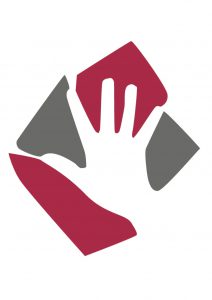MUCOUS CYST
This is a ganglion of the end joint of the finger. It is a fluid-filled swelling that arises from the lining of the joint. They often resolve spontaneously but can recur.
WHAT CAUSES IT?
Although the exact cause is not known, these swelling are often seen in arthritic joints. It is believed that the wear and tear in the joint gives rise to these swellings
WHAT ARE THE SIGNS AND SYMPTOMS?
The cysts are often painless although there may be pain arising from the arthritic underlying joint. The cysts are often unsightly and can cause ridging of the nail. They can also be painful if caught and can occasionally burst and can rarely result in an infection of the joint.
HOW IS IT DIAGNOSED?
A detailed history and examination is often all that is required to make the diagnosis. You will need and x-ray to confirm the arthritis in the underlying joint.
HOW IS IT TREATED?
The cyst is a benign swelling and does not require treatment in most cases. If this cyst continues to grow in size it can burst and potentially cause an infection in the underlying joint. If it causes discomfort or results in ridging of the nail it can be surgically removed.
WHAT DOES THE OPERATION INVOLVE?
The cyst is removed under local anaesthetic as a day case procedure. The cyst is removed along with part of the lining of the joint (capsule) from which it arises. A portion of the extra bone (osteophyte) that forms in arthritic joints is also removed to reduce the risk of this swelling returning.
AFTERCARE
Following the operation you will normally have a bulky dressing covering your wound for 48hours. This is then replaced with a sticky dressing at 48hours until 10 days following your operation. At 10 days your stitches will be removed.
RETURN TO WORK
This depends on the nature of your work. For a sedentary occupation the time off is normally 2 weeks. For a manual occupation this can be as long as 6 weeks.
DRIVING
It is normally safe to drive within 6-7 days of your operation but it is normally best to leave this until your stitches have been removed at 10 days.
RETURN TO SPORT
This depends on the intensity of the sport but in most cases a return by 6 weeks is the norm. However more physically demanding sports can require as much as 3 months off.
COMPLICATIONS
Like with any surgery there are a number of small risks associated with this operation.
Infection (1%) is a risk with all surgery. In the majority of cases these are infections around the wound and can be treated with a course of antibiotics. The more unusual deep-seated infections however can require admission to hospital and surgery to clean the wound out if necessary.
Swelling and Stiffness can remain for many months following surgery. It is important to elevate the limb and keep all joints that are not immobilised with a splint, active.
Scar Sensitivity is often a problem with surgery in the hand, particularly the palm. This is often self-limiting and daily massage of the scar can shorten the duration of the symptoms. The sensitivity does settle is all cases with time.
Nail Bed Injury is a potential but very rare risk with this surgery. The cyst often rests on the portion of the nail bed that contributes to 90% of the nail’s growth (germinal matrix). The cyst can itself erode into this part of the nail bed causing a defect in the nail. However an injury to this part of the nail bed during removal of the cyst can affect the growth of the nail longer term.
Recurrence is a potential problem with all ganglia. In an operation that removes the capsule along with the osteophytes the risk is low.
Complex Regional Pain Syndrome is an extremely rare (1%) complication that can follow any injury or surgery to a limb. In this situation the nerves in the arm over-react to the point where the hand becomes very painful, swollen and sensitive. This condition does improve with time but can be problematic for many months (see section on Complex Regional Pain Syndrome).
